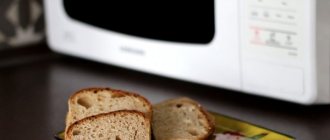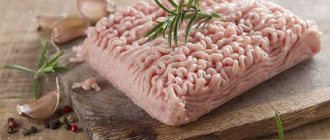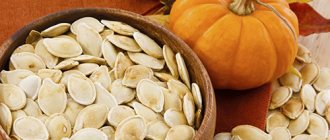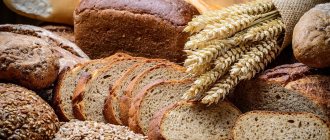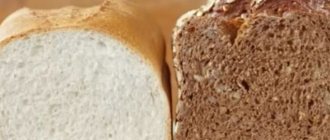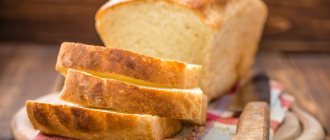Fragrant fresh bread with a crispy crust, still hot, the smell of which instantly awakens the appetite, is a favorite delicacy for many, but, unfortunately, all bakery products are perishable products and quickly lose their original properties.
One of the main features of changes in bread during storage is its hardening, which occurs due to the evaporation of moisture from the finished product. What to do with such a wasteful product? It is quite possible to refresh it and, using simple methods, make it soft again. Basically, these methods are based on exposure to high temperatures and high humidity. Bread can be made soft again in the microwave, oven, or frying pan using some tricks.
Softening in the microwave
This method is considered one of the fastest and most effective, although it is more suitable for bread in pieces - the thickness of the slices for softening in the microwave should be about 2 centimeters. This can be done in two ways.
- Sprinkle the stale pieces a little with water and place in the oven for a maximum of 60 seconds; additionally, you can place a saucer or glass of warm water in the microwave next to the bread. It is better to check the condition of the slices every 15 seconds - otherwise you can overdry them, making them even tougher. In addition, it is advisable to cover it with a special microwave cover made of plastic.
- Soak a paper towel in cool water, squeeze out excess moisture and wrap the dried bread, which is then placed in the microwave with the towel for 10-20 seconds.
Method two: paper towels
This method is perhaps even easier than the previous one.
Procedure:
- Take paper or thin textile towels and moisten them with boiled water. If you choose paper towels, you need to make sure they don't tear.
- Squeeze as much as possible.
- Wrap the bread.
- Place in the microwave and turn on the oven for 20 seconds.
A damp towel will release moisture to the bread under the force of heat, the pieces will be saturated with steam and will hold it for several hours.
Tenderizing in the oven
This method of preparatory operations is practically no different from the method of softening in a microwave oven - the stale pieces are first sprayed with water or wrapped in a damp towel and kept in a preheated oven. At a temperature of 160–180 degrees, it will take 2–3 minutes to soften, at 100–120 degrees – 5–8 minutes.
While still in the oven, you can refresh stale bread by wrapping it in food foil in advance; in this case, the holding time increases - at a temperature of 160–180 degrees it will be 10–15 minutes. Be sure to let the bread cool slightly before removing it from the foil.
We recommend: How to quickly clean a cast iron or aluminum cauldron?
Greek gods dessert
Rye bread crumbs are the main ingredient of a popular dessert in the Baltics known as Ambrosia or “Farmer's Daughter”. This dessert is especially tasty from Baltic varieties of bread such as Rizhsky, but Borodinsky is also suitable. We change the type of bread, jam, replace cream with soft cottage cheese or thick yogurt and get a new dessert every time! A very fruitful idea!
Layered dessert made from stale Ambrosia bread
The cost of products purchased to prepare these five dishes was 1050 rubles.
This is interesting: What to add to porridge? 10 delicious and healthy ideas
Steam recovery
The simplest version of this method is softening in a double boiler or multicooker; for this you need to keep the stale bread in operating mode for 1–2 minutes.
If you don’t have a double boiler or multicooker, you can use a regular saucepan and colander. Place the dry slices or whole piece in a colander over a pan of simmering water. It is important that the water does not touch the bread, otherwise it will turn into a mushy mass. After keeping the stale pieces for 5-7 minutes, you will get completely soft slices that are suitable for consumption. The disadvantage of this method is the need for constant monitoring of the process - the product may absorb excess moisture and will have to be dried.
Bread resuscitation
Before you begin rescuing stale slices, you should take a close look at them. The presence of mold is a signal that this product is unsuitable for food. You don’t need to think that the fungus is limited only to those spots on the surface that you were able to notice and cut off. If you find at least one “patch”, rest assured: the mycelium has already sprouted everywhere, you can only see it with high magnification in a microscope. Eating bread contaminated with mold fungi is dangerous to health.
Proven Methods
, steam procedures were most often used for these purposes
- In the oven. After wrapping the pieces of bread in a damp linen towel, they placed them on a baking sheet in the oven for five or ten minutes, depending on how stale the bread was.
- In a metal sieve or colander set over a pan of boiling water. The water should not boil. The slices were laid so that steam passed freely between them. The distance between the surface of the water and the colander should be four centimeters, and the lid should not tightly cover the recovery chamber. All these precautions must be observed, and also periodically glance at the bread so that the pieces do not absorb too much steam and turn into something between porridge and jelly.
- In a water bath. The procedure is similar to the previous one, with the only difference that instead of a colander, a smaller saucepan was used.
- In a plastic bag. This is not so ancient, but still a long-known method: almost hermetically sealed stale bread was laid out on a sunny windowsill or a hot central heating radiator and checked periodically.
Soften in a bag
Stale slices or a piece of bread are placed in an ordinary plastic bag, which is tightly tied and placed either on the windowsill, if it is a warm season and it receives direct sunlight, or on the radiator, if, of course, they are hot. The softening process will take quite a long time, but the effect will be longer. After some time, thanks to the condensation that begins to form in the bag, the bread will begin to become soft.
You can place the dry bread in a bag along with the celery root and refrigerate overnight (at least 6 hours). In this case, the pieces of product should be as small as possible. After the specified time has passed, you can see how the celery has dried out, giving up its moisture to the now soft product.
Use of the weathered product
In the event that there is no need to restore the original properties of bread, it can easily be used, namely:
- Dry it further, using a mixture of seasonings if necessary, and then use it as crackers. In this case, the main thing is to know at what temperature to dry the crackers in the oven in order to obtain an excellent ingredient for soups and salads from the weathered product;
- add to the minced meat as an ingredient in cutlets, meatballs, cabbage rolls and any other chopped semi-finished products;
- use as part of homemade baked goods - these can be various pies, pies;
- make breadcrumbs from dry bread;
- Prepare the croutons by first dipping the bread slices in the egg.
Important!
It should be borne in mind that it is necessary to soften stale bread immediately before eating it. The reconstituted product remains soft for no more than 2 hours, and it will not be possible to make it soft again.
In addition, when trying to revive stale slices, be sure to check them for the presence of mold, which is quite often found on bread that is not the first freshness. If the product shows at least initial signs of the appearance of mold fungi, then you should not eat it, try to soften it, or add it to other dishes, since eating moldy products can cause very severe food poisoning.
We recommend: What and how can you quickly wash glassware until it shines?
Why does bread go stale quickly?
It is generally accepted that bread begins to lose its freshness due to the fact that moisture leaves it. This seems like an obvious fact: it gets dry and quite tough if left unwrapped on the counter. But this is a big misconception. The fact is that bread becomes stale due to the fact that it begins to absorb too much moisture. It's quite hard to believe, but it's true: the main ingredients are water and flour. This means that this product contains a large amount of starch. It is he who begins to draw moisture into himself, gradually crystallizing.
Because of this, the crumb quickly loses its elasticity and softness, becomes hard and begins to crumble heavily. This process is called “starch retrogradation”. The speed of its development depends on the type of finished product. So, wheat bread will begin to stale much faster than rye bread. In the second case, this reaction slows down somewhat, since the acid present in the composition is protected (thanks to the leaven).
How to store bread so it stays soft longer
In order not to think about how to make stale bread soft again, and not to look for ways to use a stale product, you just need to know how to store it correctly.
- In the bread bin. It is this that will ensure the longest shelf life and maintain softness. Additionally, you can put sugar or salt poured into a small container in the bread bin - this trick will maintain the optimal humidity level for storage.
- In plastic bags. This will ensure that it stays soft for 4-5 days. It is better to make holes in such bags (using a regular hole punch), since without air access the bread will quickly begin to mold.
- In special bread bags. They consist of two layers of cotton fabric, between which there is a polyethylene gasket with holes. You can buy such bags in supermarkets.
- In a paper bag or wrapped in a sheet of paper. You should absolutely not use newspapers for this - harmful substances from printing ink can quickly be absorbed into the product.
Try to store bread correctly, do not buy a lot of it so that it does not linger. And if it so happens that the product has become stale, make sure there are no other signs of spoilage and soften it using any of the proposed methods. And Bon Appetit!
Adviсe
To preserve bread products for a long time, you need to follow several tips:
- It is advisable to start cutting the loaf from the middle, and then connect the halves, then it will not go stale longer.
- If you put the products in the freezer, you should first wrap them in cling film.
- To prevent all the steam from escaping from the microwave oven, when checking the readiness of the bread, you should use a special plastic lid.
- For the best effect, when using the oven, the door should be opened slightly. So, all excess moisture will come out.
- You should not store white and brown bread in the same container; mixing yeast will cause it to start molding.
- You need to regularly wash the dishes where the loaf is and wipe it with a vinegar solution.
- If you make your own bread, cool it on a wire rack in a draft-free place for about 3 hours.
To prevent bread from becoming stale and stale, you need to know how to store it correctly. If, nevertheless, the product begins to become hard, then you need to make sure that there are no signs of damage or mold on it, and then soften it using one of the presented methods. The bread will become fragrant, hot and crispy again.
Sources
- https://uborka.co/uhod/kak-sdelat-chyorstvyiy-hleb-svezhim
- https://mamamoet.ru/sovety/razmyagchit-hleb-v-mikrovolnovke/
- https://tehnika.vyborkuhni.ru/mikrovolnovka/razmyagchit-hleb
- https://bb22.ru/uborka/kak-cherstvyy-hleb-sdelat-myagkim-sposoby-osvezhit-zasohshiy/
- https://uborka-v-dome.ru/kulinariya/kak-razmyagchit-cherstvyj-hleb.html
- https://katuna.ru/kak-sdelat-hleb-myagkim-v-mikrovolnovke
- https://mikrovolnovochki.ru/poleznye-sovety/kak-razmyagchit-cherstvyy-hleb-v-mikrovolnovke/
- https://www.dompovarov.ru/sovety/kak-cherstvyj-xleb-sdelat-myagkim/
- https://mschistota.ru/cleaning/kitchen/kak-cherstvyj-xleb-sdelat-myagkim.html
- https://novate.ru/blogs/100918/47735/
- https://hozsekretiki.ru/sovety/razmyagchit-hleb.html

